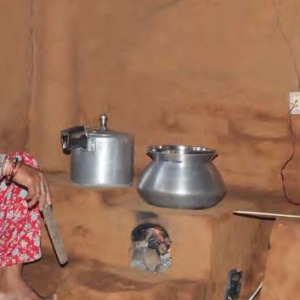Pitch
Efficient burning of firewood resulting in less consumption, reducing cooking time and decreasing the incidence of health hazards.
Description
Summary
Burning of biomass releases pollutants such as black carbon and methane. Black carbon released due to incomplete combustion is estimated to contribute about 25 -50 percent of CO2 in the atmosphere. Emission from burning biomass in open fires or crude stoves inside household can have serious implication in the health of the family. Chronic exposure to smoke from traditional cooking practices is one of the world’s biggest but least known killer. That could be prevented with increased adoption of clean and efficient cooking solutions. Open fires and primitive stoves are inefficient at converting energy into heat for cooking. With better fuels and more efficient cooking stoves, such emissions could be reduced.
The vision of this idea (M-ICS) is to improve health and sanitation status of rural households, protect the environment, save time and energy, and generate income and campaigning to declare pollutant free zone by the promotion of highly efficient Improved Cooking Stoves (ICS).
The components are divided into two major categories on the basis of the process involved; manufacturing and installation. The major components used in the manufacturing of the M-ICS are as listed below:
• Burner: The raw material used is cast iron. It is fabricated by using the burner dye.
• Electrical system: People living in the accessible area use this, whereas people in the remote and rural area doesn’t use this component.
• Fiber glass dye: It is used during the fabrication of stove in the field. It is used by the technical expert.
• PVC pipe: It is used during the fabrication of stove in the field. It is used by the technical expert.
Nepal government has announced to make indoor air pollution free country within 2018. That implies more than 1 million cooking stoves have to be installed. Being the most efficient, affordable and simple technology, the demand of Matribhumi Improve Cooking Stove (M-ICS) is increasing.
What actions do you propose?
Who will take these actions?
Where will these actions be taken?
How much will emissions be reduced or sequestered vs. business as usual levels?
M-ICS saves nearly 65% of firewood and has efficiency as high as 27% making it superior to other improved mud cookstoves with efficiency only up to 18%. M-ICS is affordable, easy to use and durable. It does not alter the taste of food, cooks food in less time and with less firewood, significantly reduces cost and saves time spent for firewood collection. The use of this M-ICS results in the reduction of firewood consumption by 0.96 tons and reduction of CO2 emission by 1.76 tons per annum as compared to traditional firewood cooking stove. Due to proper combustion than the conventional cooking stove, concentrations of carbon monoxide decreases on average by 69%; total suspended particle concentrations by 53% and formaldehyde concentrations by 65%.
What are other key benefits?
- Help reduce the gender inequality with active participation of women in income generating activities due to reduction in household load.
- Fulfill the demands of domestic energy use in affordable cost with the use and promotion of locally available resources,
- Incorporating renewable energy technologies without changing conventional and cheap fuel source, i.e. firewood.
- Reducing the rate of deforestation due to lower and efficient consumption of firewood.
- The major NGOs, government institutions are demanding to help promote the use of M-ICS. More than 10,000 employment opportunity can be created in Rural Nepal.
